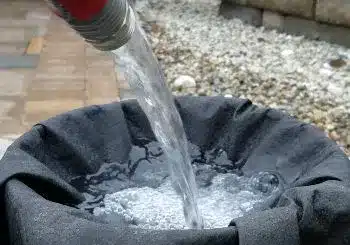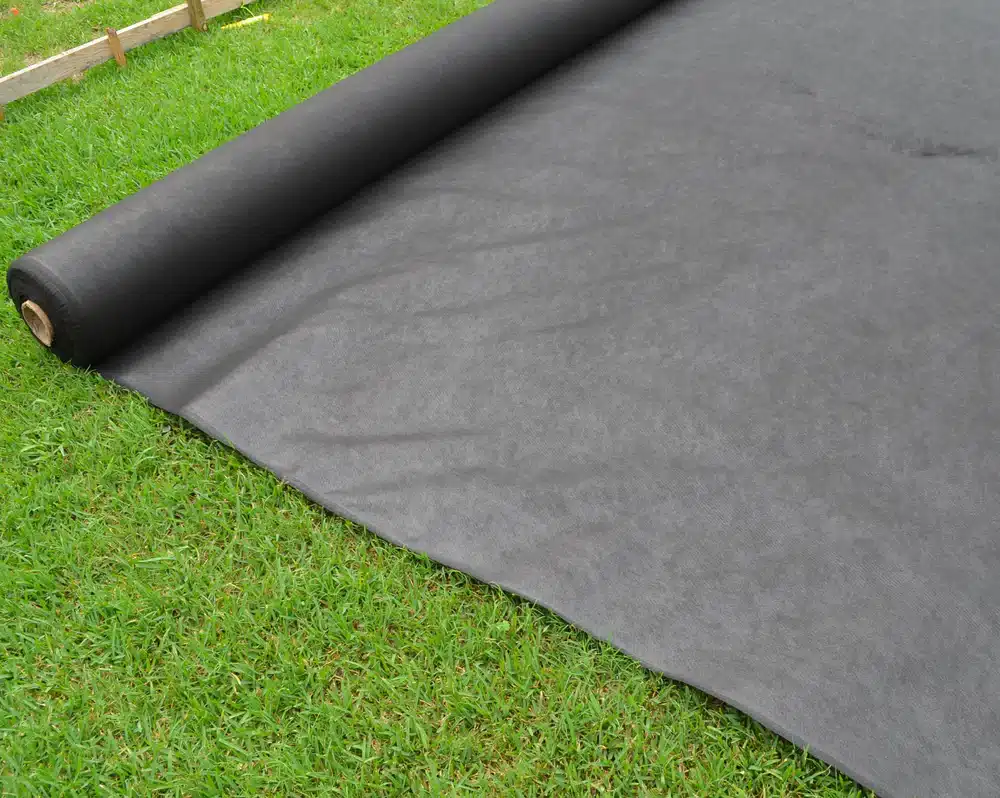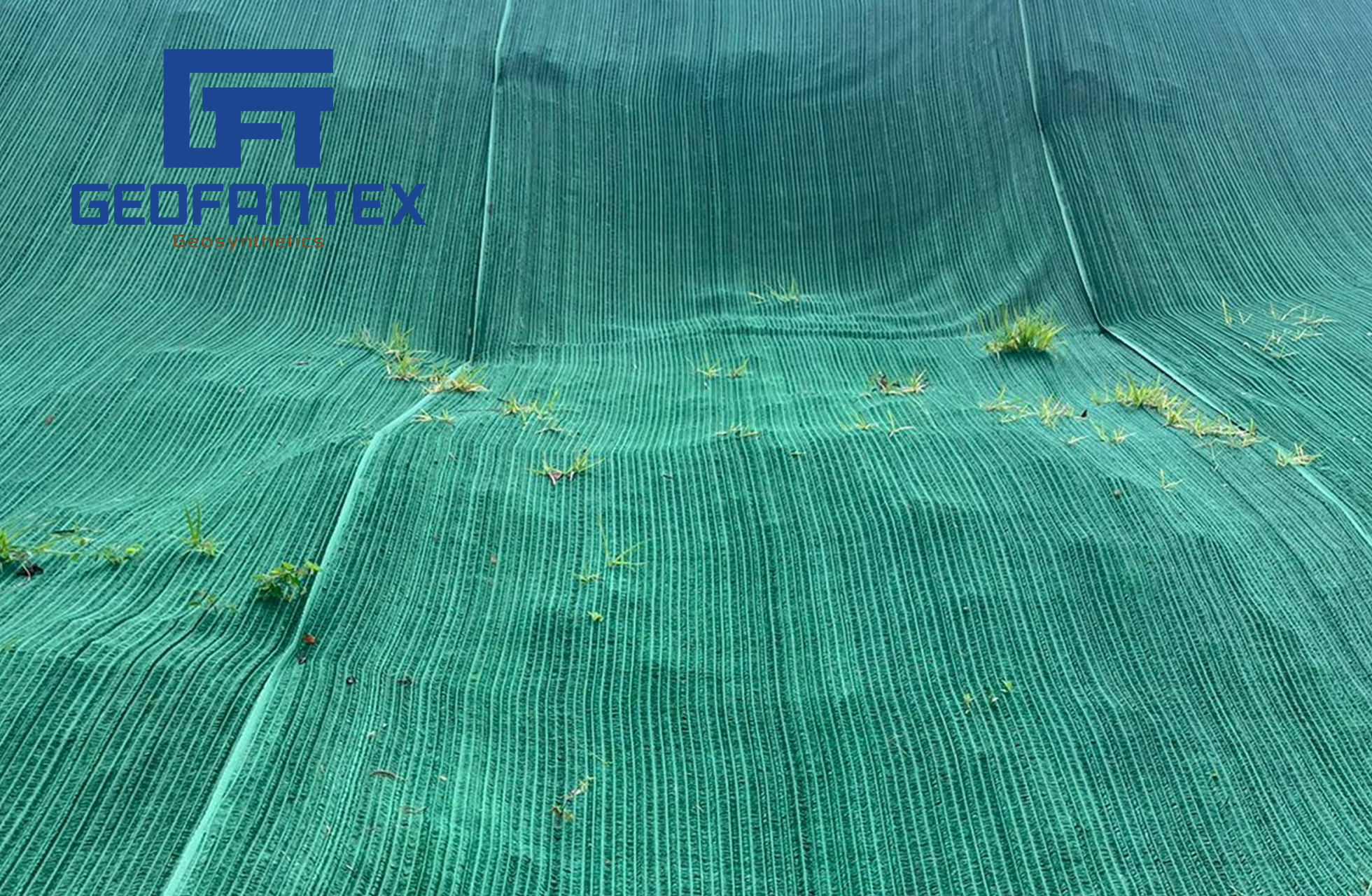+86-159 9860 6917
info@geofantex.com
geofantex@gmail.com
+86-400-8266163-44899
Landscapers and gardeners alike recognize the importance of landscaping fabric for their gardens or any hardscape project. This fabric provides reinforcement, separation, and filtration while allowing for good drainage. However, not all landscaping fabrics are the same, nor are they suitable for every project. With various fabrics available on the market, it’s essential to know which one will work best for your project before making a decision.
Woven and non-woven fabrics each have their strengths and weaknesses when it comes to installation, depending on their characteristics. Below, we will discuss their similarities and differences, as well as the best applications for each in hardscape installations.

Different Kinds of Landscape Fabrics
Landscape fabrics play a crucial role in gardening and landscaping. Here are some common types:
- Woven Landscape Fabric: Made from woven polypropylene, it’s durable and allows water, air, and nutrients to pass through while blocking weeds.
- Non-Woven Landscape Fabric: Often made from polyester or polypropylene fibers bonded together, it’s effective at weed control and allows for water permeability.
- Permeable Landscape Fabric: Designed to let water pass through easily, ideal for areas where drainage is essential, such as under gravel or in heavy rain areas.
- Heavy-Duty Landscape Fabric: Thicker and more durable, suitable for high-traffic areas or under hardscaping like driveways and pathways.
- Biodegradable Landscape Fabric: Environmentally friendly, made from natural fibers like jute or coir, it decomposes over time, providing temporary weed control and soil erosion prevention.
Each type has its advantages depending on your landscaping needs, from weed control to soil protection and water management. Do you have a specific type in mind for your project?

Woven Geotextile Landscape Fabric
Definition and Composition
- Woven Geotextile Landscape Fabric is a type of geosynthetic material made by weaving polypropylene or polyester fibers in a specific pattern.
- Known for its strength and durability, it’s designed to support soil stabilization, erosion control, and provide separation between soil layers in landscaping and construction.
Common Uses in Landscaping and Construction
- Erosion Control: Prevents soil erosion on slopes, embankments, and riverbanks by stabilizing soil structures.
- Drainage Solutions: Allows water to pass through while filtering fine particles, reducing sediment in drainage systems.
- Road Construction: Enhances road foundations by separating soil layers and preventing rutting and subsidence.
- Retaining Wall Support: Reinforces soil behind retaining walls, reducing pressure and enhancing stability.
Advantages Over Non-Woven Fabric
- Higher Strength: Its woven structure provides superior tensile strength, making it more suitable for load-bearing applications.
- Increased Durability: Often lasts longer in high-traffic or heavy-duty areas due to its woven composition.
- Better Filtration Control: Effectively controls the passage of soil while allowing water permeability, which is ideal for drainage applications.
Installation Guidelines
- Surface Preparation: Clear the installation area of debris, roots, and large rocks to create a smooth base.
- Overlap and Securing: Overlap fabric edges by 6-12 inches, and secure with landscape staples or pins to prevent shifting.
- Covering: Once laid, cover with soil, gravel, or other materials as per project requirements to protect from UV degradation.
- Avoid Excessive Tension: Lay the fabric loosely to prevent tearing under pressure or soil shifting.
Maintenance and Potential Drawbacks
- Limited Flexibility: Woven fabric may be less pliable than non-woven types, which could limit its use in complex shapes or contours.
- UV Sensitivity: Exposed fabric can degrade if not covered; always install under soil, mulch, or gravel.
- Periodic Checks: Inspect for signs of wear, especially in high-load areas, and replace sections as necessary to maintain effectiveness.
Non-Woven Geotextile Landscape Fabric
Definition and Characteristics
Non-woven geotextile landscape fabric is a synthetic material used primarily for filtration, separation, and drainage in various landscaping and construction applications. Unlike woven geotextiles, which have a crosshatched pattern, non-woven geotextiles are made by bonding synthetic fibers together through a needling process. This results in a fabric that resembles felt, is thicker, and has a porous structure that allows water to pass through while retaining soil and other materials.
Comparison with Woven Geotextiles
Non-woven geotextiles differ from woven geotextiles in several ways:
- Structure: Non-woven geotextiles are made from randomly oriented fibers, giving them a soft, felt-like texture, while woven geotextiles are created by weaving fibers in a structured pattern.
- Function: Non-woven geotextiles excel in filtration and drainage, while woven ones are typically used for stabilization and load-bearing applications.
- Durability: Woven geotextiles are often stronger but less permeable, whereas non-woven geotextiles offer high water flow rates, making them better for applications where water drainage is essential.
Applications in Landscaping and Erosion Control
Non-woven geotextile fabrics are highly versatile and serve multiple purposes:
- Drainage and Filtration: Placed beneath gravel or other aggregates to filter water, they prevent soil clogging.
- Erosion Control: Commonly used on slopes, embankments, and other areas prone to erosion, non-woven geotextiles help stabilize soil.
- Road and Driveway Bases: These fabrics separate soil from aggregate layers, which improves road durability by reducing soil displacement.
- Landscaping Beds: Used under mulch or decorative rocks to block weed growth while allowing water infiltration.
Benefits of Using Non-Woven Geotextile
- Enhanced Drainage: High permeability ensures effective water flow and prevents standing water.
- Soil Stabilization: Ideal for areas with loose or shifting soils, helping maintain landscape structure.
- Weed Prevention: When placed beneath mulch or other coverings, the fabric acts as a natural weed barrier.
- Cost-Effective: Reduces the need for frequent soil maintenance or repair due to its stabilizing effects.
Environmental Considerations
Meanwhile, synthetic, non-woven geotextiles are often designed to minimize environmental impact by reducing the need for herbicides (due to weed suppression) and enhancing soil stability. Some newer products are also biodegradable or made from recycled materials. It is essential to choose the right product for each project to avoid unnecessary environmental strain, particularly in ecologically sensitive areas.
Installation and Maintenance Guidelines
Installation:
- Preparation: Clear the area of debris and level the ground.
- Fabric Placement: Roll out the fabric to cover the area, overlapping edges by at least 6 inches to prevent gaps.
- Securing: Use landscape pins to anchor the fabric, particularly along edges.
- Covering: Add gravel, soil, or mulch on top, depending on application needs.
Maintenance: Non-woven geotextiles are generally low maintenance, though monitoring for soil accumulation or blockages is recommended. In landscaping beds, periodically refresh the covering layer to prevent UV exposure.

How to Use Landscape Fabric
To use landscape fabric:
- Prepare the Area: Clear weeds and debris, and level the soil.
- Cut the Fabric: Measure and cut the fabric to fit the area, leaving an overlap between sheets.
- Lay the Fabric: Place the fabric on the soil, rough side down, and secure with stakes or pins.
- Cover: Add mulch or soil on top to protect the fabric and prevent UV damage.
- Planting: Cut slits for plants, and insert them through the fabric.
Periodically check for shifting or weeds, and maintain coverage with mulch.
There are numerous benefits to installing geotextiles in your landscape or hardscape project. Several factors must be considered before choosing the best geotextile for your project. This article provides guidance on selecting the right product for your project’s extended life and ensuring proper installation by following the recommended directions.



Get Free Sample
We’ll respond as soon as possible(within 12 hours)






















